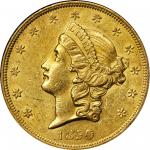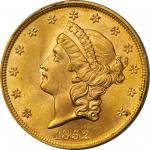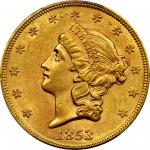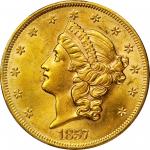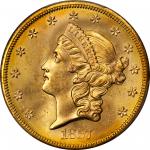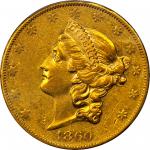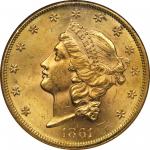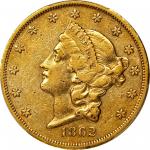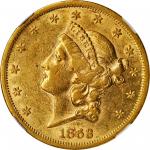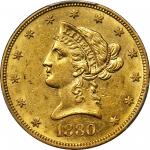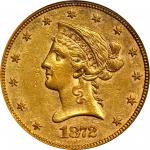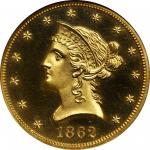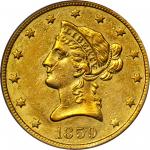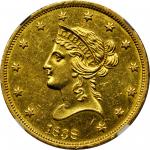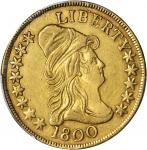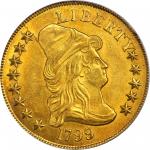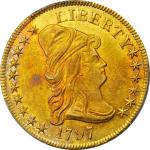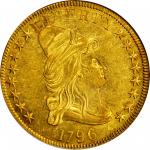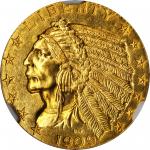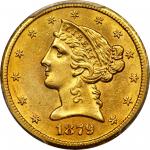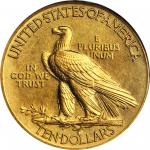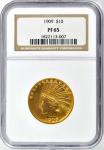1909 Indian Eagle. Proof-65 (NGC).This 1909 eagle is an exquisite example from the challenging Proof Indian eagle series of 1908 to 1915. Fully struck with highly detailed devices, both sides also display a bright, even, medium gold hue. The finish is characteristic of the issue -- a lively satin texture that is seen only for this year and 1910 among Proof eagles of this design type. Very nicely preserved and easily deserving of the Gem grade from NGC, we anticipate strong competition for this rare coin among advanced 20th century gold enthusiasts.Commencing in 1908 with a mintage of 116 pieces, the regular issue Proof Indian eagles at first featured a dark Sandblast finish that had earlier been adopted by several European mints for special coins and medals. The United States Mint had used this finish during the late 19th century in the production of certain medals. The new gold coin designs introduced in 1907 and 1908 for the quarter eagle, half eagle, eagle and double eagle did not lend themselves to the die preparation required to produce cameo and brilliant Proofs as had been produced for the Liberty Head series. In the words of Acting Superintendent of the Philadelphia Mint Albert Norris from November 1908: "The designs of the new gold coins are such that the dies cannot be polished, therefore we could not make proofs...with a polished surface, so the Engraver has finished these proofs similar to medals with a dull finish." Specifically, the extreme curvature of these dies and the texture of the fields prevented the necessary polishing to produce cameo and brilliant-finish Proofs.Unfortunately, the contemporary public neither understood the situation facing the Mint nor were they willing to accept an alternative. Contemporary sales of 1908-dated Proof gold coins proved disappointing, the coins themselves were criticized for their "dull" appearance, and the Mint had to seek an alternative method of manufacture to garner public acceptance.The solution chosen by the Mint was the satin finish shown on the coin presented here. In reality, the method of manufacture is surprisingly similar for these Satin Proofs and their Sandblast predecessors. Both were struck from new dies in the Mints medal press, but whereas the satin pieces were left as is, the other pieces were sand blasted after striking. As much as it is appreciated today, the satin finish used on regular issue Proof 1909 and 1910 Indian eagles proved just as unpopular with the contemporary public as its predecessor. While much brighter and more vibrant, the Satin Proofs too closely resembled circulation strike coins. In use for just two years, the satin finish in turn yielded to variations of the sand blast process that would continue until the Mint ceased striking Proof gold coins after 1915.The unpopularity of the Satin Proof 1909 Indian eagle with contemporary collectors can be seen in the number of coins extant. The mintage is just 74 pieces, although the number of coins actually distributed was likely (far) fewer. Examples that remained unsold at years end were eventually destroyed in the Mint. While we have seen some estimates for the number of coins extant as high as 50 to 65 pieces (in the online version of the <em>PCGS Population Report</em>, for one), we place greater stock in more conservative estimates provided by several numismatic authors: 30 to 45 pieces per James L. Halperin , et. al. in the 2006 book <em>The Coinage of Augustus Saint-Gaudens</em>, and 30 to 35 coins per Mike Fuljenz in the 2010 book <em>Indian Gold Coins of the 20th Century</em>. The infrequency with which examples appear at auction certainly supports the lower estimates. Indeed, it has been quite some time since we have had the privilege of handling a Proof 1909 Indian eagle.An important rarity in an absolute sense, this exquisite Gem deserves equal recognition as a condition rarity. The delicate surfaces of these Satin Proofs were easily marred. The present specimen is nearly as pristine as the day it emerged from the dies. It is a lovely example of coinage art from the early 20th century United States Mint that belongs in the finest cabinet.



